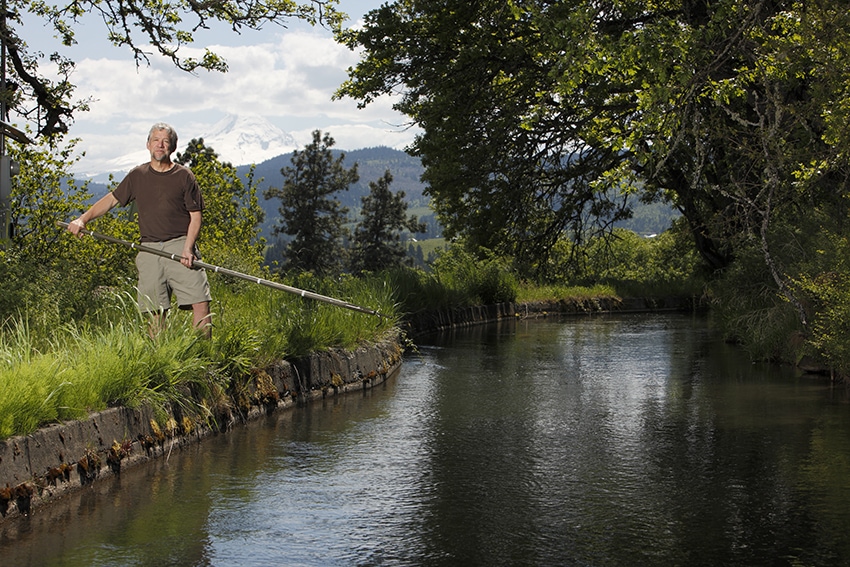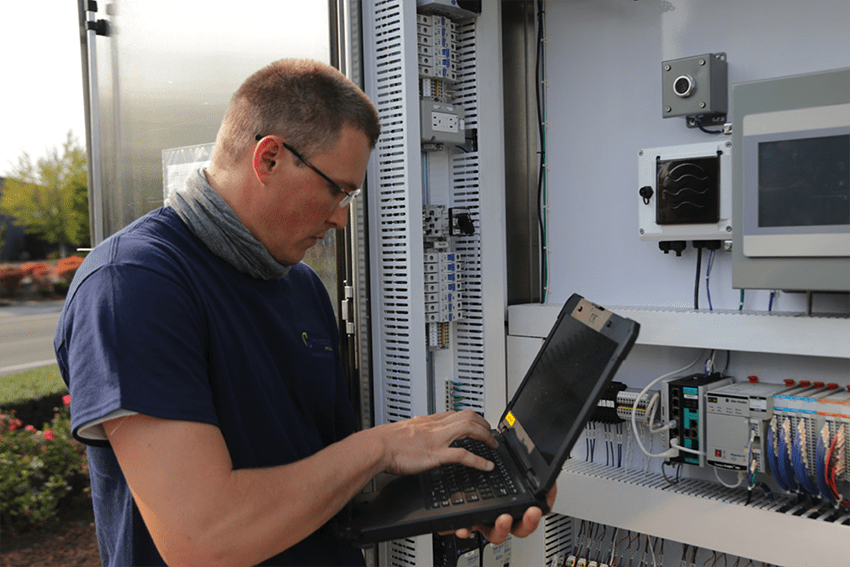Oregon has significant small hydropower resources—but they might not be where you expect.
- Irrigation hydropower: Irrigation canals are being replaced with pipes, which creates pressure that can power a turbine and generate renewable electricity. These improvements also save energy for farmers and conserve water for rivers and wildlife. In some cases, farmers and ranchers can use that pressure to install their own small hydro projects, further reducing their energy costs.
- Pressure reduction valve hydropower: Municipal water providers can replace pressure reduction valves with hydropower turbines to regulate pressure and generate renewable electricity.
- Existing dams: Only three percent of dams in the U.S. generate electricity. Adding hydropower can leverage environmental benefits for fish and water.
-
Establish your eligibility.
To be eligible for an Energy Trust incentive, a hydropower project must:
- Be less than 20 megawatts in nameplate capacity (maximum rated output).
- Be located in the service territory of, or deliver power to, Portland General Electric or Pacific Power in Oregon.
-
Reach out to learn more.
If you have a hydropower resource and are interested in using it to generate electricity, contact Kyle Petrocine at kyle.petrocine@energytrust.org.
-
Get the help you need.
It’s helpful to start with a feasibility study or expert assistance to move through permitting or utility interconnection. Energy Trust can provide up to $200,000 in support for these and other types of project development activities, and we can help you identify engineers or other experts with the experience to help.
Project Development Assistance
Energy Trust provides project development assistance including, but not limited to, grant writing assistance, feasibility studies, final design, permitting, and utility interconnection. We can pay up to 50% of the cost of hiring an outside consultant to provide expert assistance for these activities, up to a maximum of $200,000.
Project development assistance forms
Form 910E
Form 930RF
Installation incentives
Energy Trust provides incentives towards the construction costs of your hydro project. Incentive levels are based on a project’s cost in comparison to the market value of the energy produced, or “above-market cost”. A potential installation incentive is based on a net-present value assessment that accounts for all the project’s costs and revenues. In return for our funding contribution, we ask for a negotiated share of the project’s Environmental Attributes (e.g. Renewable Energy Certificates), which are held in trust for the ratepayers who pay the public purpose charge that funds our work.
Incentives are subject to funding availability and may change.
Net Metering
If you install a biogas or hydro system, your utility will come to your site and switch out your existing utility meter for a bidirectional “net” meter (there is no charge for the new meter). Visit our net metering page to learn more about the benefits of generating your own energy to reduce your electricity bills.
Learn about hydropower basics
Not sure if you have enough head (pressure) and flow (moving water) to generate hydropower? Unsure what those terms mean? Take a few minutes to learn how hydropower systems work to harness the energy in moving water.
This Intro to Hydropower (© 2008 Home Power Inc.) article includes explanations of the terminology and system components involved in hydropower and gives simple techniques for estimating the capacity of hydrological resources, particularly streams.
Hydropower permitting and interconnection information
There are different state and federal permitting requirements for hydropower depending on a project’s size and location. For first-time developers, the permitting and utility interconnection processes can seem daunting. As described on the Details tab, Energy Trust offers Project Development Assistance incentives to encourage developers to hire permitting professionals to speed up the development process.
Learn about the federal permitting requirements for your project here.
The guidebooks below have been written for both new and experienced developers and are intended to serve as a roadmap to Oregon’s permitting requirements and the utility interconnection process.
Questions? Need Help? Contact Us.
We’re here to explain the process and benefits. Contact Kyle Petrocine.

